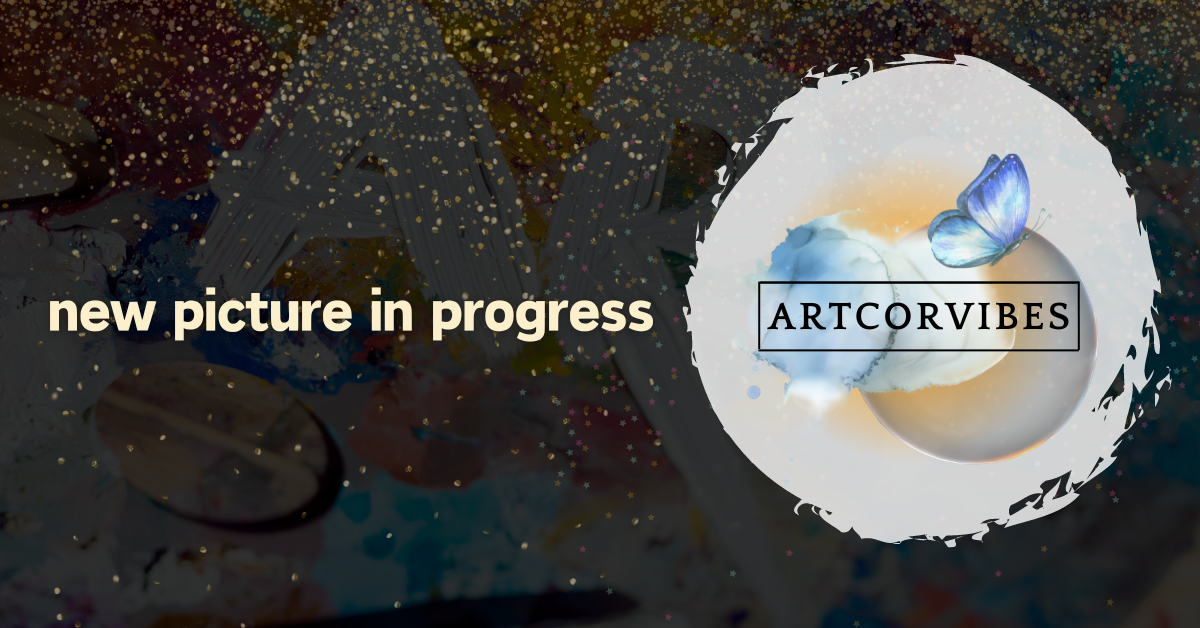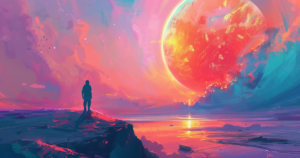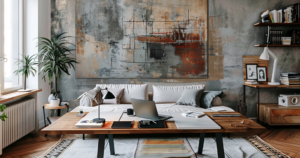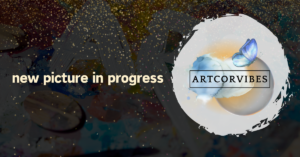When delving into the world of art, you may come across the term “rendering”. But what does “rendered” signify in an artistic context? Understanding this concept is essential for appreciating the art creation process and the techniques artists employ to bring their creative visions to life.
Rendered in Art:
In a nutshell, rendering in art refers to the process of creating an image from scratch, gradually adding details to make the artwork look realistic and captivating. It can differ slightly depending on whether traditional or digital art is being discussed. In traditional art, rendering often involves translating what the artist sees before them or in their mind’s eye into an arrangement of forms on the canvas, using color, value, and lines. On the other hand, rendering in digital art typically relates to using computer software to generate a picture from 2D or 3D modeling, focusing on elements such as lighting, shading, and textures.
Various rendering techniques exist, including smooth rendering, hatched rendering, and cross-hatched rendering, each lending a uniquely expressive quality to the final piece. As you progress on your artistic journey, understanding and experimenting with these techniques will help you hone your skills and develop your distinctive style.
Fundamentals of Art Rendering
Definition and Origins
When you hear the term rendered in art, it refers to the process of adding detail, shading, and texturing to a piece of artwork. The goal is to create a more realistic and visually appealing piece by enhancing its depth and dimension. Rendering has its roots in traditional art as well as in digital art. In traditional art, rendering involves using lines, shapes, colors, and even sculptures to give a three-dimensional appearance to the piece. On the other hand, digital art rendering is achieved through the use of computer effects, software tools, and simulations to finalize the artwork.
Rendering Techniques
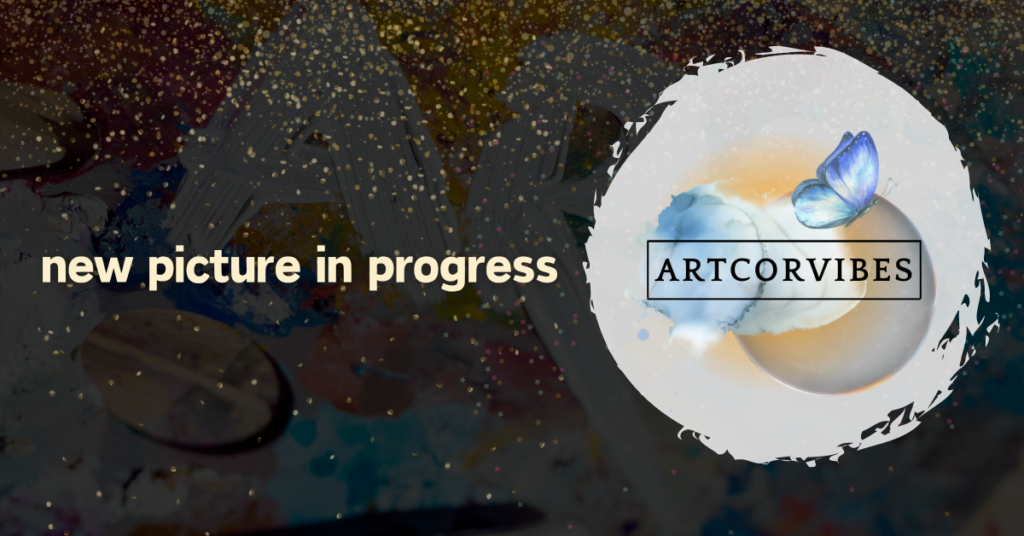
There are numerous rendering techniques that artists use to bring their artwork to life. Here are a few common methods to enhance your art:
- Shading: This technique creates depth and dimension by adding different tones and values, representing light and shadow, to an artwork. Depending on the medium, you might use pencil strokes, layers of paint, or digital brushes to create these effects.
- Linear perspective: By drawing lines that converge towards a vanishing point, you can create the illusion of depth and three-dimensionality in your artwork.
- Texture: Adding texture can make elements in your art feel more realistic – think of the intricate details on a tree’s bark or a fabric’s weave. You can achieve this by varying your brush strokes, using different materials, or employing digital tools that mimic real-life textures.
- Reflection and refraction: These techniques involve including the effects of light on surfaces in your artwork. For example, consider how light reflects off a glassy surface or how it bends and distorts through a water droplet.
The rendering process can take time and patience, but with practice and the right techniques, you’ll master the skills needed to create dynamic, visually striking pieces of art.
Applications of Rendering in Different Art Forms

Digital Art
In the world of digital art, rendering is the process of taking a painting from a rough state to a more polished finished state. This typically involves working on lighting and shading, as well as adding details and textures to create a convincing and visually appealing image. Some tools and techniques commonly used in digital art rendering include:
- Layers: Working with layers allows you to organize your artwork and make adjustments without affecting the entire image.
- Brushes: Digital brushes come in various shapes, sizes, and textures, emulating traditional art tools.
- Shading: Adding shadows and highlights gives depth and dimension to your digital artwork.
- Color: Adjusting color balance, saturation, and contrast can improve the overall look and feel of your illustration.
Traditional Painting

In traditional painting, rendering refers to the process of adding more details and refining the image to make it look more real and captivating. Techniques used in this art form include:
- Underpainting: Establishing a tonal foundation for the painting, typically using a monochromatic color scheme.
- Glazing: Applying thin, transparent layers of paint over the underpainting to build up color and depth.
- Lighting: Properly using light and shadow to create a sense of volume and dimension.
- Texture: Emphasizing various textures to make the painting look realistic and visually interesting.
Sculpture
In sculpture, rendering relates to how the artist creates the illusion of depth and form on a 3D object. This can involve:
- Carving: Shaping the material by removing sections of it.
- Modeling: Adding and adjusting the material to create form.
- Shading: Applying different tones to enhance the sculpture’s appearance and sense of depth.
- Surface treatment: Using different techniques to create distinct textures on the sculpture’s surface.
Understanding the applications of rendering in these diverse art forms allows you to create visually striking and realistic artworks. Remember, practice and patience are key as you continue to refine your skills and techniques in rendering.
Impact of Rendering on Art Appreciation

Viewer’s Perception
When you experience a piece of artwork, the process of rendering plays a crucial role in shaping your perception. A well-rendered piece can create a sense of depth and realism, making objects appear 3D and captivating your attention. The use of techniques such as line drawing, shading, and texturing helps to create visually stunning artwork, leading to a more immersive viewing experience.
Here’s a quick glance at how different rendering techniques impact the viewer’s perception:
- Line drawing: This provides the basic structure and conveys the form of the subject.
- Shading: Enhances the sense of depth and volume, creating a more convincing representation.
- Texturing: Adds a tactile, sensory dimension to the artwork.
Artistic Expression
Artists can use rendering as a creative tool to express their unique visions and ideas. Be it traditional or digital art, rendering techniques enable artists to experiment and push their creative boundaries. As an artist, you can adopt various styles of rendering to convey your emotions, moods, and ideas. It is also possible to blend different rendering styles to create a one-of-a-kind piece of artwork.
Some popular rendering styles in art include:
- Realism: Aimed at accurately depicting the subject’s appearance.
- Impressionism: Focuses on the visual impression and the effects of light and color on the subject.
- Abstract: Breaks away from the traditional representation and allows the artist to convey more conceptual themes.
In conclusion, mastering the art of rendering allows you to elevate your artistic skills, ultimately enhancing both your personal expression and the viewer’s appreciation of your work. Command over rendering techniques gives you the freedom to explore various styles, leading to the creation of more compelling and visually engaging art.
Do you like the topic of rendering? Feel free to leave a comment for us.
How is rendering done?
Rendering is done by gradually building up tones and textures, carefully adjusting light and shadow, and refining details to create a lifelike or visually convincing effect, either by hand in traditional art or using software in digital art.
What is the benefit of rendering?
Rendering enhances realism, depth, and dimension in art, helping to create a more immersive and believable visual experience. It allows for the detailed depiction of textures, lighting, and atmosphere.
What are examples of rendered?
In art, rendered examples include a detailed pencil drawing, a 3D computer model with lifelike textures and lighting, or a painting where light and shadow are depicted realistically to create a sense of depth.

